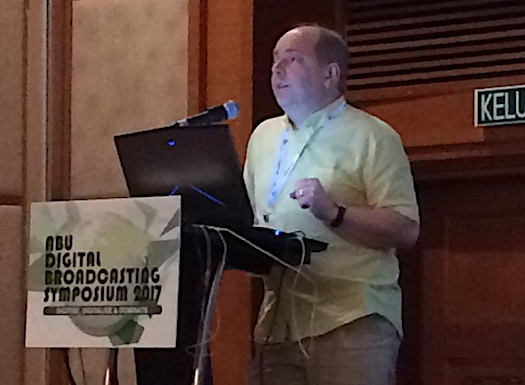The DAB technical standard has been updated, identifying obsolete features, clarifying the description of features to aid interoperability and updating other specific features.
The revised standard ensures the digital transmission technology keeps pace with the latest technical developments in its 21st year of existence.
The WorldDAB Technical Committee worked on the revisions to clarify and simplify the DAB system standard in a compatible way.
Lindsay Cornell, Chair of the WorldDAB Technical Committee (pictued above) explains: “The aim of the work was to review the standard and identify features that were obsolete, to clarify the description of features, incorporate changes that had been agreed elsewhere in the interpretation of features and update specific features… [we] also worked on creation of the DAB audio standard, identical to the definition in the previous DAB system standard, and the consequential changes to supporting documents to align them with the new version.”
The changes fall in the following areas:
Transmission modes
Audio
Programme Associated Data
Packet mode
Data Group CRC has been made mandatory for transmission
Fast Information Channel (FIC)
For many broadcasters, the changes will have few impacts, because the aim of Task Force Clean was to make sure that changes were mostly compatible with the way that DAB is actually used.
However, to make the system work better, some changes need to be made to the multiplexing equipment of all broadcasters, whilst other changes will only be needed if certain features are used.
Broadcasters do not need to make any changes in regard to transmission mode, audio coding or PAD (including dynamic label), but they will need to make some updates to multiplexing equipment due to changes to the FIC. This is especially true for those that regularly use reconfiguration for pop up channels.
If you are a broadcast technician working on your station’s DAB digital radio transmission chain, you need to read this full report on the standards.
The new versions of the standards have been published by ETSI. They are:
- EN 300 401 V2.1.1: DAB system standard
- TS 101 756 V2.1.1: Registered Tables
- TS 103 466 V1.1.1: DAB audio
- TS 102 563 V2.1.1: DAB+ audio
- TS 102 980 V2.1.1: DL Plus

